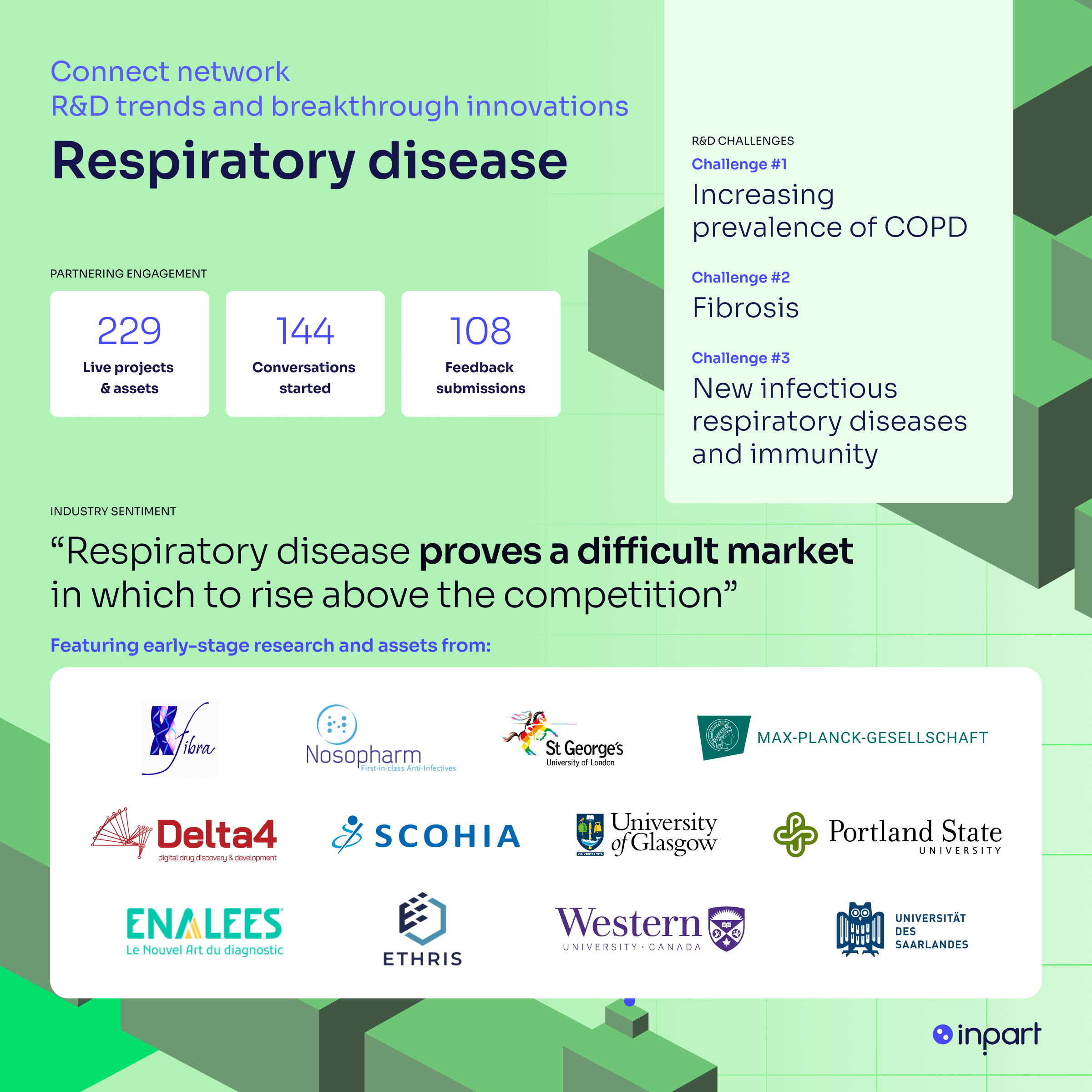In this report, we surface the most promising early-stage research and assets from academic groups and biotech companies worldwide.
The trends and breakthroughs featuring in the report come from analyzing the engagement of R&D, S&E, and innovation teams using our online partnering platform to identify new partners and opportunities for their pipelines.
